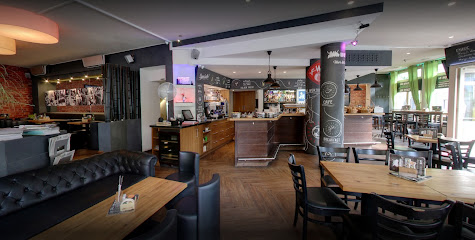
Echterbastei: A Bastion of History
Explore the Echterbastei, a Renaissance-era bastion in Würzburg's Marienberg Fortress, offering history, art, and panoramic views of the city and Main River.
The Echterbastei, a prominent bastion within the Marienberg Fortress in Würzburg, Germany, stands as a testament to Renaissance-era military architecture. Constructed around 1600 under Prince-Bishop Julius Echter von Mespelbrunn, it provided crucial fortifications and housed armaments. Severely damaged during WWII, it was reconstructed in the 1950s and now houses part of the Museum für Franken, displaying Franconian art and artifacts. Visitors can explore its historical architecture, offering panoramic views of Würzburg and the Main River. The Echterbastei is a key landmark within the fortress, representing centuries of Würzburg's strategic importance and cultural heritage. Its robust structure and historical significance make it a must-see destination for history enthusiasts and tourists alike, providing a glimpse into the region's rich past.
A brief summary to Echterbastei
- Würzburg, Zellerau, 97082, DE
- Visit website
Local tips
- Wear comfortable shoes, as exploring the fortress involves a fair amount of walking on uneven surfaces.
- Visit during sunset for breathtaking panoramic views of Würzburg and the Main River.
- Allow at least 3 hours to fully explore the Marienberg Fortress, including the Echterbastei and other museums.
- Check the Museum für Franken's website for current hours, admission prices, and special events.
- Consider taking a guided tour of the fortress to learn more about its history and significance.
Getting There
-
Walking
From the Alte Mainbrücke (Old Main Bridge), walk across the bridge towards the Marienberg Fortress. Once across, follow the signs uphill towards the fortress entrance. The path, known as the 'Tellsteige', winds through the former Landesgartenschau park and takes approximately 30-45 minutes to reach the Echterbastei. This scenic route offers views of the city. Note that the walk is moderately steep.
-
Public Transport
From Würzburg Hauptbahnhof (main train station), take bus line 9 towards 'Festung'. The bus stops directly at the Marienberg Fortress. From the bus stop, it's a short walk to the Echterbastei within the fortress grounds. A single bus fare is approximately €3.10. Alternatively, trams are available from the main station to the city center, from where you can connect to bus line 9 or walk across the Old Main Bridge.
-
Taxi/Ride-Share
A taxi or ride-share from Würzburg Hauptbahnhof to the Marienberg Fortress typically costs between €12-€18, depending on traffic. The journey takes approximately 10-15 minutes. Request the driver to take you directly to the Festung Marienberg entrance for the shortest walk to the Echterbastei.
-
Driving
If driving, follow signs towards 'Festung Marienberg'. Limited parking is available near the fortress. Parking fee is €5.00 per day. Be aware that during peak season, parking spaces fill up quickly. From the parking area, follow the signs to the Echterbastei within the fortress complex.
Discover more about Echterbastei
Iconic landmarks you can’t miss
Echterbastei
0.0 km
Explore the Echterbastei, a Renaissance-era bastion in Würzburg's Marienberg Fortress, offering history, art, and panoramic views of the city and Main River.
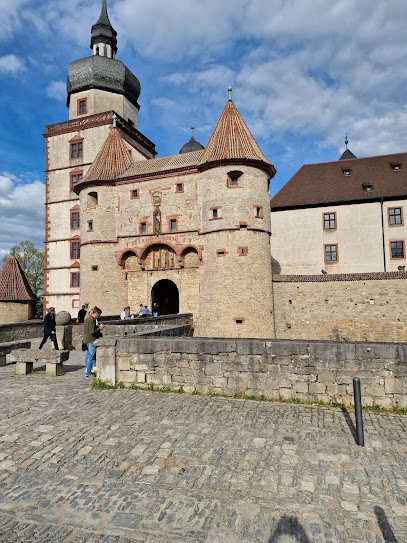
Scherenberg Gate
0.1 km
Discover the Scherenberg Gate, a historical landmark in Würzburg, showcasing stunning architecture and rich cultural heritage in Germany.
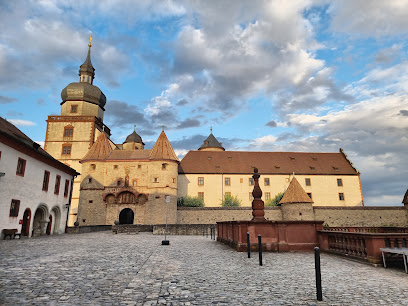
Keep
0.1 km
Experience the historical splendor of the Keep in Würzburg, Germany, where medieval architecture meets stunning panoramic views.
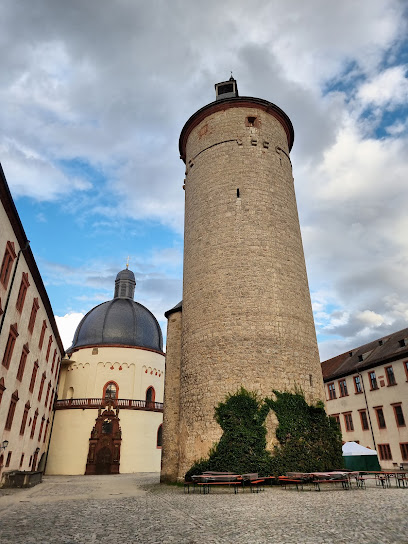
Wolfkeelsche Ringmauer
0.1 km
Discover the historical charm of Wolfkeelsche Ringmauer in Würzburg, a captivating landmark offering panoramic views and a glimpse into the city's medieval past, nestled in the serene Zellerau district.
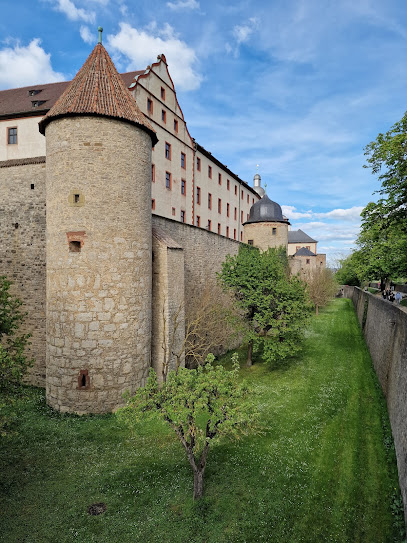
Marienkirche Festung Marienberg
0.2 km
Discover Würzburg's oldest church, the Marienkirche, nestled within the historic Festung Marienberg, showcasing a blend of Romanesque, Gothic, and Renaissance architecture and centuries of Franconian history.

St Mary's Tower
0.2 km
Explore the historical charm of St Mary's Tower in Würzburg, a stunning architectural gem offering breathtaking views and rich heritage.
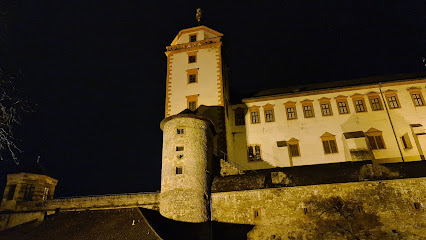
Reichsravelin
0.2 km
Immerse yourself in the rich history of Würzburg at Reichsravelin, a stunning historical landmark showcasing military architecture and beautiful views.
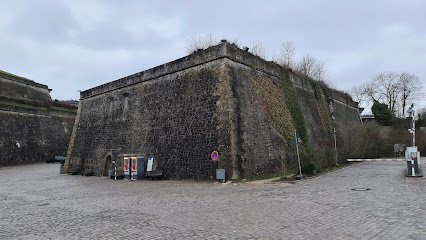
Fürstengarten
0.2 km
Escape to the tranquil Fürstengarten within Marienberg Fortress for panoramic Würzburg views, Baroque beauty, and a glimpse into the lives of Prince-Bishops, offering a serene historical retreat.
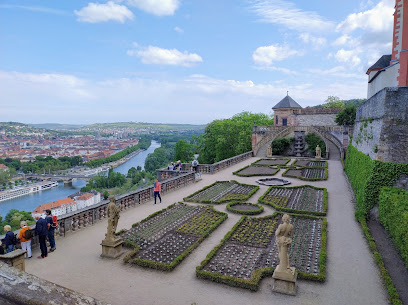
Husarenkeller
0.2 km
Explore the enchanting Husarenkeller in Würzburg, a historical landmark that brings the region's rich heritage to life with its stunning architecture.
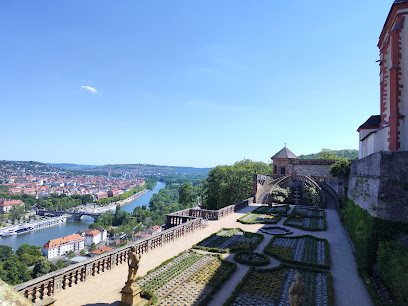
Marienberg viewpoint over Würzburg
0.2 km
Experience breathtaking panoramic views of Würzburg from the historic Marienberg Fortress, a symbol of Franconian heritage and architectural grandeur, offering a journey through time.
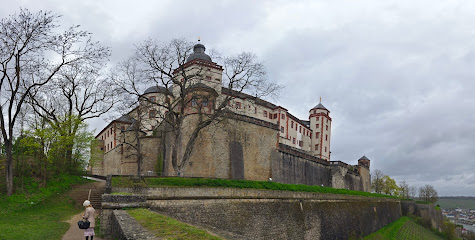
Aussichtspunkt Festung Marienberg
0.4 km
Discover centuries of history and breathtaking views at Festung Marienberg, Würzburg's iconic fortress overlooking the Main River and offering a glimpse into Franconian art and culture.

Burkard Gate
0.4 km
Discover the Burkard Gate, a stunning Baroque architectural marvel in Würzburg, a must-visit landmark steeped in history and beauty.
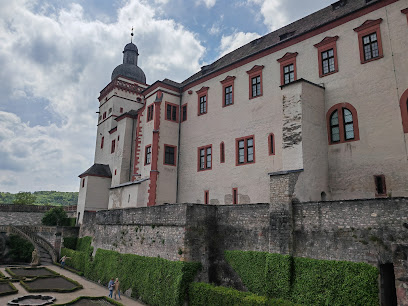
Statue of Saint Bruno
0.6 km
Admire the Statue of Saint Bruno on Würzburg's Old Main Bridge, a historic landmark offering stunning views and a taste of Franconian culture, connecting past and present.
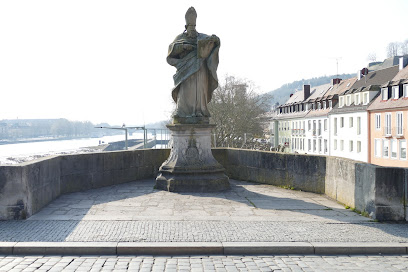
Statue of Emperor Carl the Great
0.6 km
Admire the Statue of Emperor Carl the Great on Würzburg's Alte Mainbrücke, a historical landmark offering stunning views and a taste of Franconian heritage.
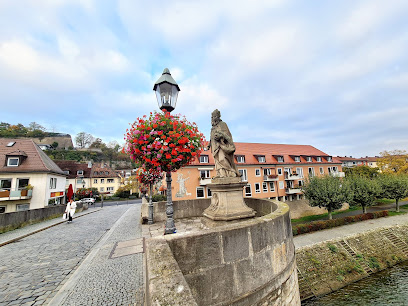
Brückenstatue Jungfrau Maria
0.6 km
Discover the Brückenstatue Jungfrau Maria in Würzburg, a historical landmark offering breathtaking views and rich cultural significance along the beautiful Alte Mainbrücke.
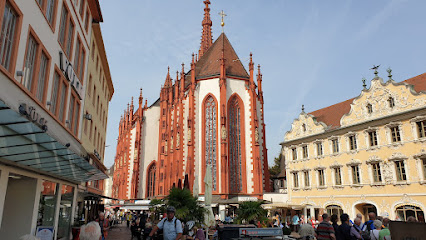
Unmissable attractions to see
Marienberg Fortress
0.1 km
Discover the enchanting Marienberg Fortress, a historical landmark in Würzburg offering stunning views and rich Bavarian heritage.

Fürstenbaumuseum
0.2 km
Experience Würzburg's heritage at Fürstenbaumuseum, where local history comes alive through captivating exhibits and stunning views.
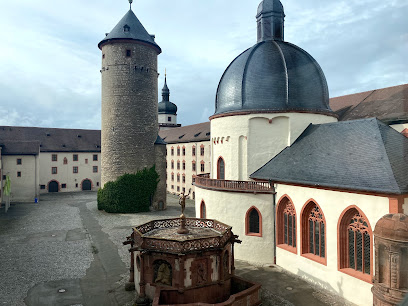
Maschikuli Tower
0.2 km
Explore the Maschikuli Tower, a historical landmark in Würzburg that showcases stunning architecture and breathtaking views over the city and countryside.
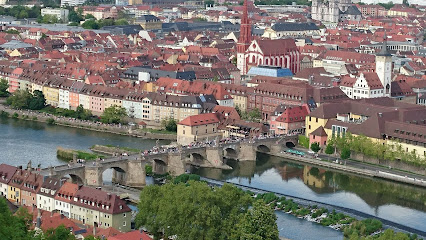
Marienberg
0.2 km
Discover the stunning Marienberg Fortress in Würzburg, a blend of history, architecture, and breathtaking views overlooking the city and the Main River.
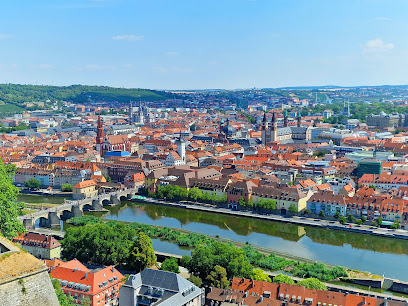
Blockhaus und Totempfahl
0.3 km
Explore Blockhaus und Totempfahl, a unique blend of history and nature in the heart of Würzburg, offering a peaceful retreat for all visitors.
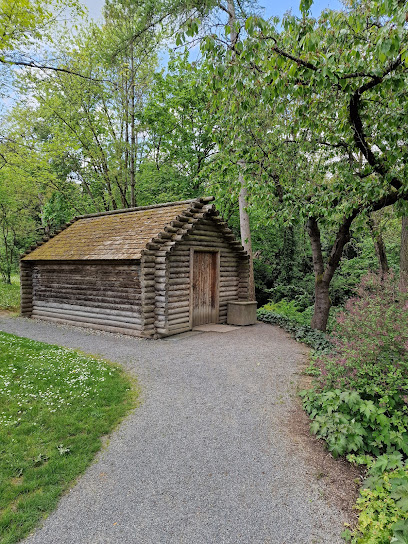
Kiliansstatue
0.3 km
Explore the historical allure of Kiliansstatue in Würzburg, a captivating monument celebrating the city's patron saint and artistic heritage.
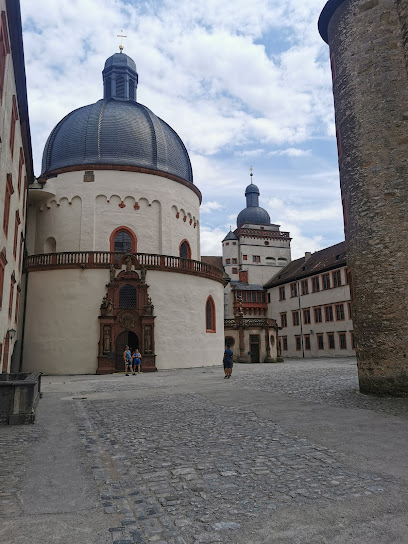
Japanese Garden
0.3 km
Experience tranquility and cultural harmony at the stunning Japanese Garden in Würzburg, a perfect escape for nature lovers and peace seekers.
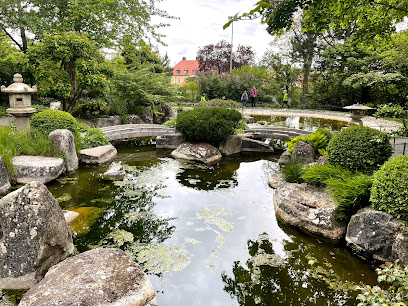
Barockfiguren
0.5 km
Explore Barockfiguren in Würzburg, a captivating tourist attraction showcasing exquisite baroque sculptures and rich cultural heritage.
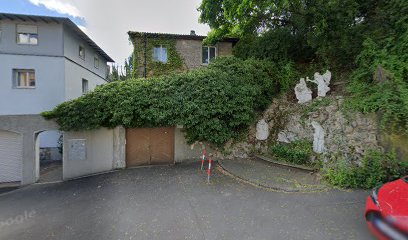
Blindenmodell Alte Mainbrücke Würzburg
0.5 km
Explore Würzburg's Blindenmodell Alte Mainbrücke, a captivating representation of the historic Old Main Bridge surrounded by charming streets and picturesque views.

Dreikronenbrunnen
0.6 km
Explore Dreikronenbrunnen, the enchanting Three Crowns Fountain in Würzburg, a serene spot showcasing the city's rich history and artistic charm.

Old Main Bridge
0.6 km
Explore the historical majesty of the Old Main Bridge in Wuerzburg, where stunning views meet rich heritage in a picturesque setting.

Käppele Sanctuary
0.7 km
Explore the divine beauty of Käppele Sanctuary in Würzburg, a captivating blend of spiritual serenity, historical intrigue, and stunning hiking trails.
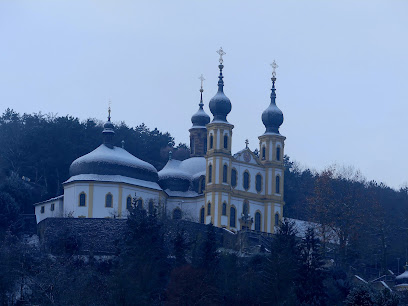
Waterfront Am Main Würzburg
0.7 km
Discover the beauty and culture of Würzburg at the enchanting Waterfront Am Main, a serene riverside escape for all travelers.
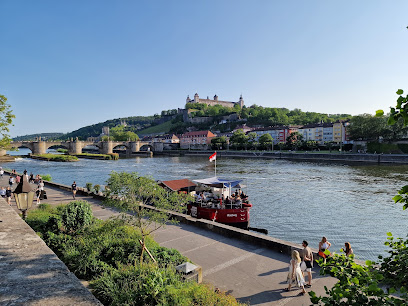
Four Tubes Fountain
0.8 km
Explore the Four Tubes Fountain, a historical landmark in Würzburg, where art meets history in a picturesque setting.
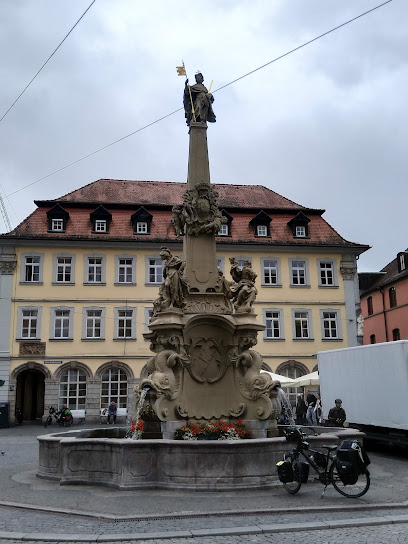
Kleine Rankpyramide
0.8 km
Explore the historical charm of Kleine Rankpyramide in Würzburg, a picturesque attraction steeped in local heritage and stunning architecture.
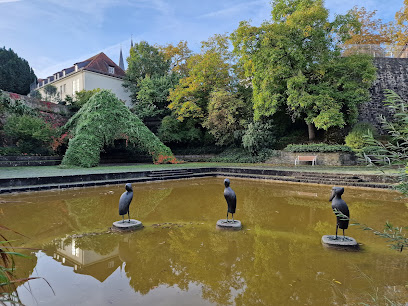
Essential places to dine
UFER Essen & Trinken
0.6 km
Experience authentic Würzburg flavors at UFER Essen & Trinken—a delightful restaurant and bar perfect for every occasion.
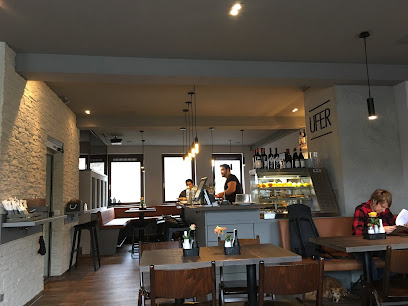
Gasthaus Alte Mainmühle
0.7 km
Experience exquisite German cuisine with stunning views at Gasthaus Alte Mainmühle in beautiful Würzburg.
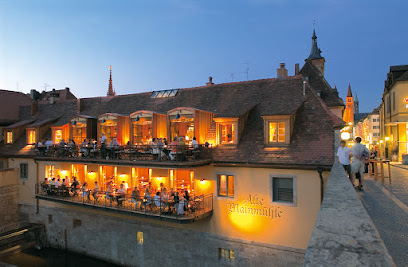
Nikolaushof
0.7 km
Experience authentic Franconian cuisine at Nikolaushof in Würzburg - where tradition meets taste in a cozy atmosphere.
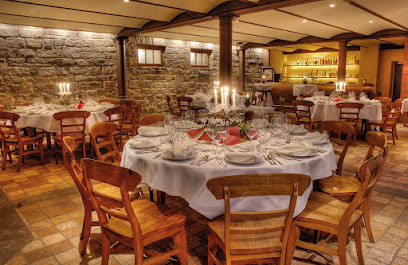
Chase Steakhouse
0.8 km
Experience the finest American dining at Chase Steakhouse in Würzburg – where perfectly grilled steaks meet gourmet flavors.
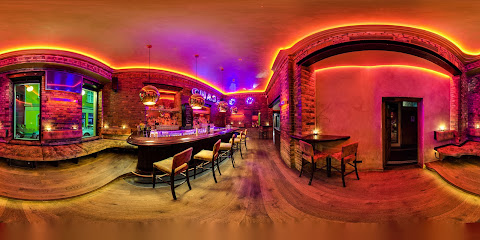
Backöfele
0.8 km
Experience authentic Franconian cuisine at Backöfele in Würzburg, where tradition meets flavor in every dish.
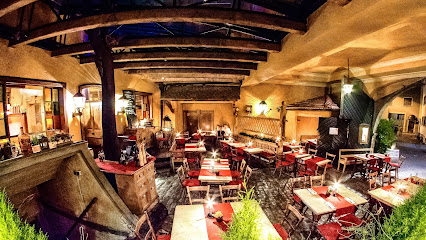
Würzburger Ratskeller
0.8 km
Experience authentic Franconian cuisine at Würzburger Ratskeller in Würzburg's charming Altstadt.

La Rustica | Ristorante & Pizzeria
0.8 km
Experience authentic Italian flavors at La Rustica in Würzburg - where every meal feels like a culinary journey through Italy.

KUNO 1408
0.8 km
Experience fine dining at KUNO 1408 in Würzburg - where traditional Franconian cuisine meets modern culinary artistry.
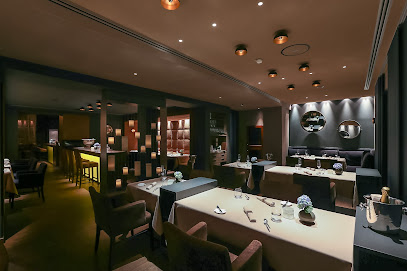
Sternbäck
0.9 km
Experience authentic German cuisine and lively atmosphere at Sternbäck in Würzburg's historic Altstadt.

Restaurant & Weinhaus Stachel
0.9 km
Experience authentic German cuisine and exquisite Franconian wines at Restaurant & Weinhaus Stachel in the heart of Würzburg.
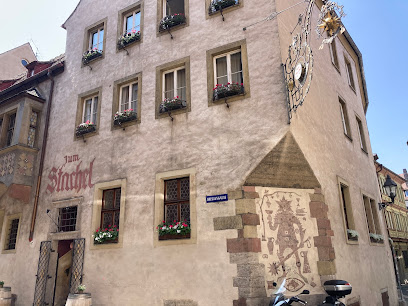
Almoço e jantar Brewery Inn Alter Kranen
0.9 km
Experience authentic German cuisine at Brewery Inn Alter Kranen in Würzburg, where delicious flavors meet breathtaking river views.
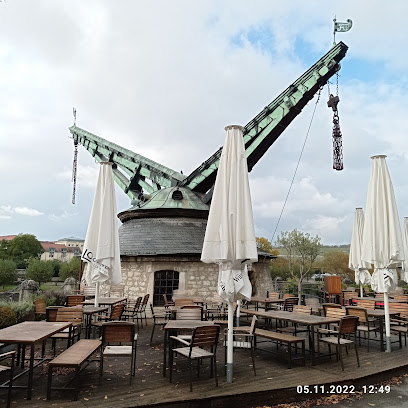
Capri Blue Grotto
0.9 km
Experience culinary bliss at Capri Blue Grotto – where Mediterranean flavors meet warm hospitality in the heart of Würzburg.
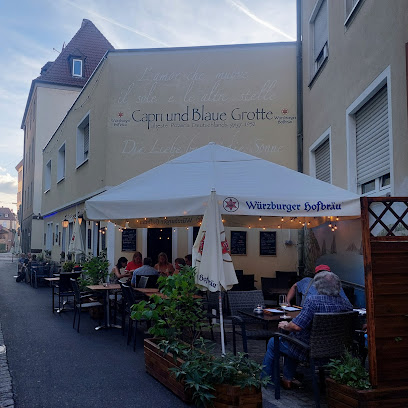
Locanda Würzburg - Pizza & Pasta
0.9 km
Discover authentic Italian cuisine at Locanda Würzburg – where every dish tells a story.

Aifach Reisers
0.9 km
Discover Aifach Reisers in Würzburg for a delightful blend of traditional German cuisine and modern culinary artistry.
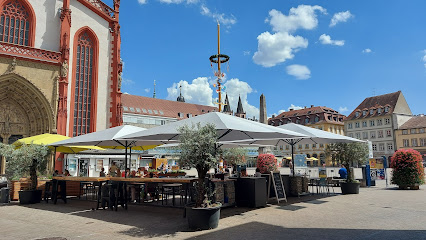
Franziskaner - Würzburg
0.9 km
Discover authentic German cuisine at Franziskaner in Würzburg - where tradition meets flavor in a warm ambiance.
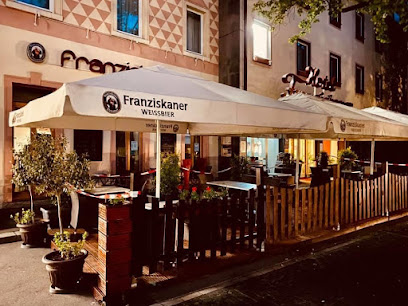
Markets, malls and hidden boutiques
WÖHRL
0.7 km
Discover WÖHRL in Würzburg: Your ultimate destination for fashion, offering a wide range of stylish clothing for the whole family.
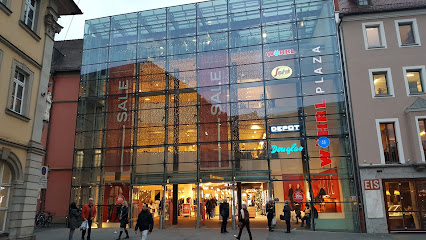
Oxfam Shop Würzburg
0.7 km
Explore Oxfam Shop Würzburg: A sustainable shopping haven for used clothing, unique accessories, and treasures that support global charity efforts.
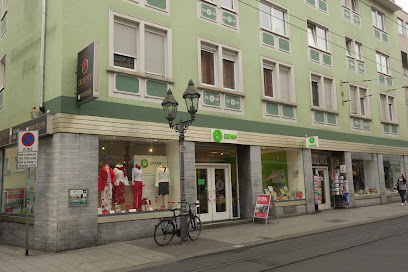
The Murmel
0.7 km
Explore The Murmel in Würzburg, a magical toy store filled with unique gifts and enchanting toys for all ages.
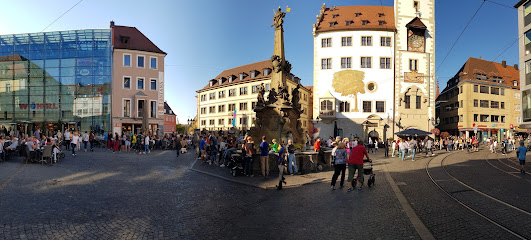
Soirée
0.7 km
Discover unique fashion at Soirée in Würzburg's Altstadt, where style meets local charm for an unforgettable shopping experience.

FORMSCHÖN
0.8 km
Discover unique gifts and local artistry at FORMSCHÖN, Würzburg's charming gift shop in the heart of the Altstadt.
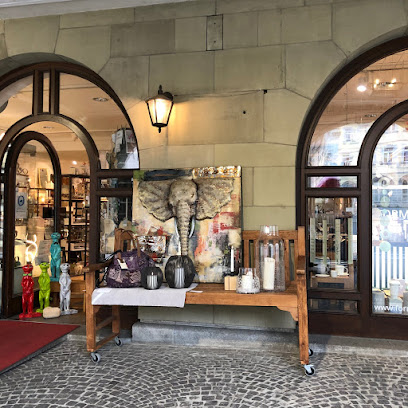
Eton Place - Schönes aus England
0.8 km
Explore Eton Place in Würzburg for unique English gifts and souvenirs that capture the charm and artistry of England.
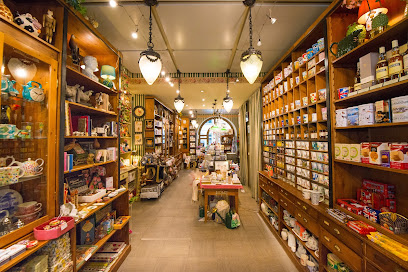
JAC (Just Act Collective)
0.8 km
Discover unique fashion at JAC (Just Act Collective) in Würzburg - where style meets sustainability in a vibrant shopping environment.

PUR Mode
0.8 km
Discover chic women's fashion at PUR Mode in Würzburg, where style meets elegance in a charming boutique setting.
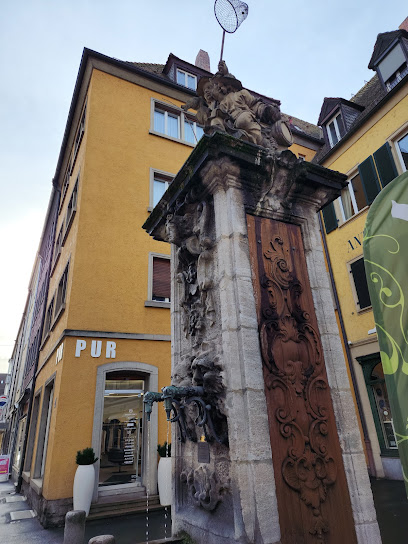
comma
0.8 km
Explore stylish collections at Comma in Würzburg, where fashion meets elegance and affordability.
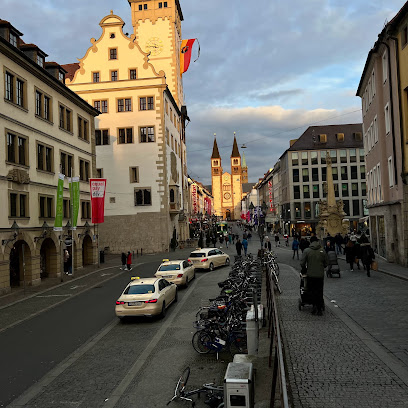
Severin Men's Fashion
0.8 km
Discover stylish menswear at Severin Men's Fashion in Würzburg, where quality meets contemporary trends in the heart of the city.
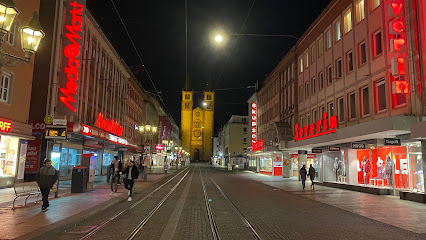
Eckhaus Wohnaccessoires
0.8 km
Discover unique gifts and home accessories at Eckhaus Wohnaccessoires in Würzburg, where local craftsmanship meets charming design.
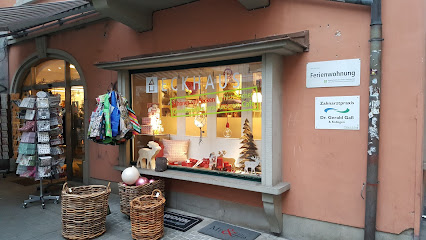
's Fachl Würzburg
0.9 km
Explore 's Fachl Würzburg for unique local gifts and handcrafted treasures that embody the spirit of this charming German city.
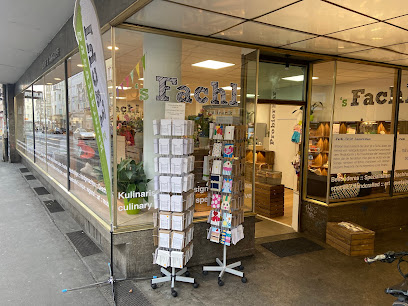
Dompassage
0.9 km
Explore the vibrant shopping scene at Dompassage in Würzburg, where retail therapy meets delightful dining and local culture.
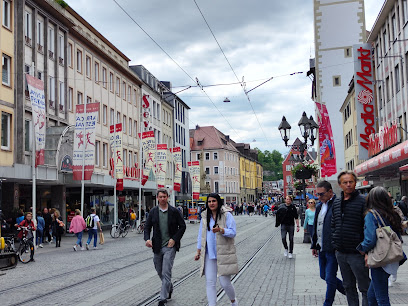
Habakuk Mode
0.9 km
Discover the chic and stylish clothing selections at Habakuk Mode in the heart of Würzburg's vibrant Altstadt, perfect for all fashion enthusiasts.
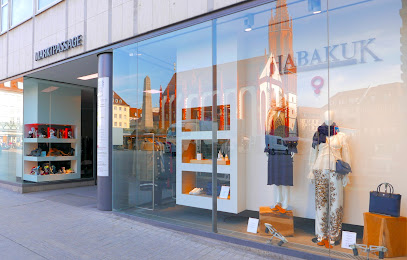
L'OCCITANE EN PROVENCE
0.9 km
Explore the exquisite world of beauty and skincare at L'OCCITANE EN PROVENCE, where nature meets luxury in the heart of Würzburg.
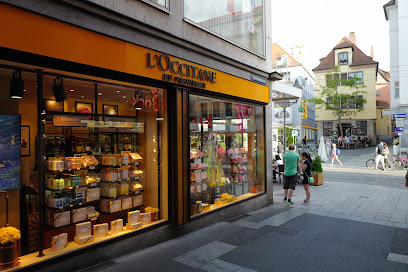
Essential bars & hidden hideouts
Moritz Bar
0.5 km
Experience the lively atmosphere of Moritz Bar in Würzburg, where great drinks and social connections await you.

Biertümpel
0.5 km
Experience the heart of Würzburg's nightlife at Biertümpel, where local beers and friendly vibes create an unforgettable atmosphere.

Zum Udo - Würzburg
0.7 km
Discover the vibrant bar scene at Zum Udo in Würzburg, where locals and tourists come together to enjoy exceptional drinks and a lively atmosphere.
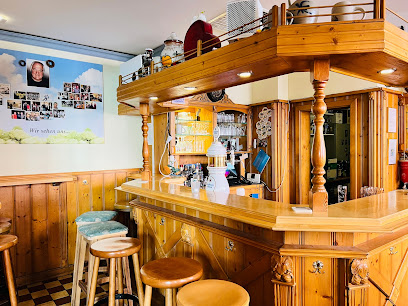
hoch3 - Skylounge
0.7 km
Discover hoch3 - Skylounge, the premier rooftop bar in Würzburg offering stunning views, a vibrant atmosphere, and a delightful selection of drinks.

Chase Bar
0.8 km
Discover the vibrant nightlife at Chase Bar in Würzburg, where cocktails flow and the dance floor beckons!
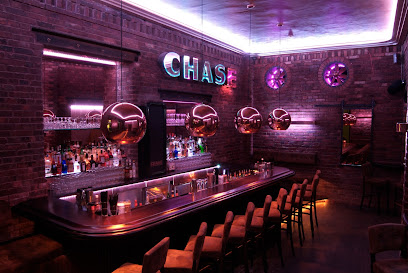
Nachtwächter
0.8 km
Experience the vibrant atmosphere of Nachtwächter, a charming pub in Würzburg offering local beers and traditional German cuisine.
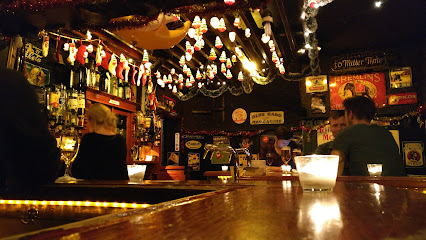
Weinstube und Bierkeller Till Eulenspiegel
0.8 km
Discover the heart of Würzburg's culinary scene at Weinstube und Bierkeller Till Eulenspiegel, where local wines and traditional dishes come together in a cozy setting.
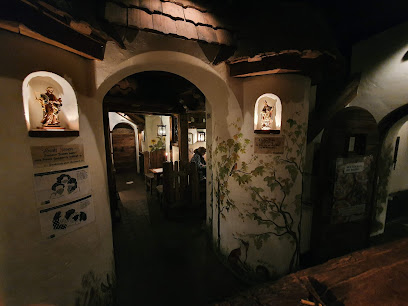
Hoffnung - Würzburg
0.8 km
Discover Hoffnung, a lively bar in Würzburg's Altstadt, perfect for enjoying local drinks and vibrant nightlife amidst charming surroundings.
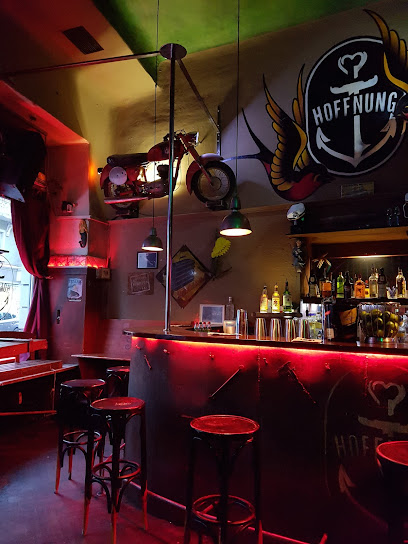
Loma
0.8 km
Discover Loma, Würzburg's vibrant bar that offers exquisite drinks and an electrifying atmosphere for nightlife lovers.
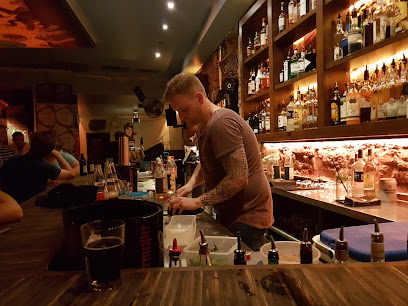
Irish Pixie
0.9 km
Experience the heart of Würzburg nightlife at Irish Pixie Bar, where delightful drinks and a warm atmosphere await.
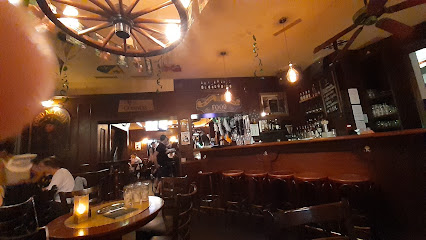
Reuererbäck
0.9 km
Discover the lively bar scene at Reuererbäck in Würzburg, where locals and tourists unite for great drinks and vibrant nightlife.
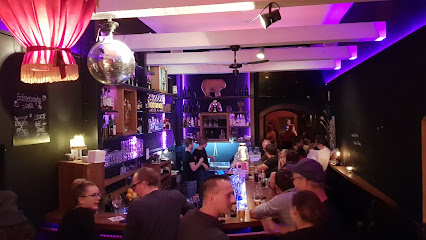
Heinrich
0.9 km
Discover Heinrich in Würzburg – an inviting bar with a vibrant atmosphere and a rich selection of drinks perfect for unwinding and socializing.
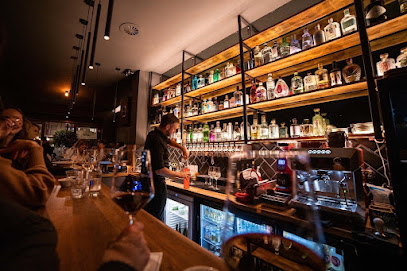
Lemondrive Bar
0.9 km
Discover the vibrant nightlife of Würzburg at Lemondrive Bar, where expertly crafted cocktails meet a lively atmosphere for an unforgettable night out.
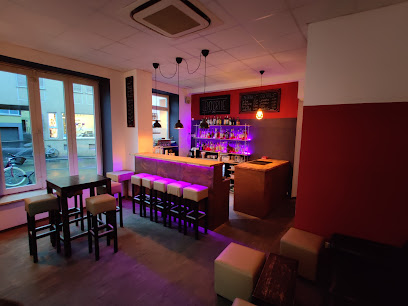
Mekong - Würzburg
0.9 km
Discover the vibrant nightlife at Mekong in Würzburg, where great drinks and a lively atmosphere await you.
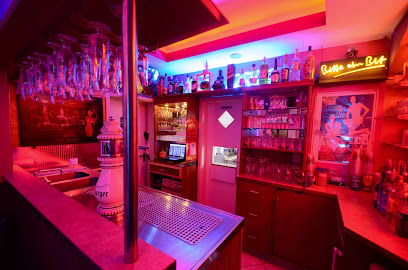
Wohnzimmer Bar Würzburg
0.9 km
Discover the vibrant ambiance and delightful drinks at Wohnzimmer Bar in Würzburg, where nightlife meets cozy comfort.
